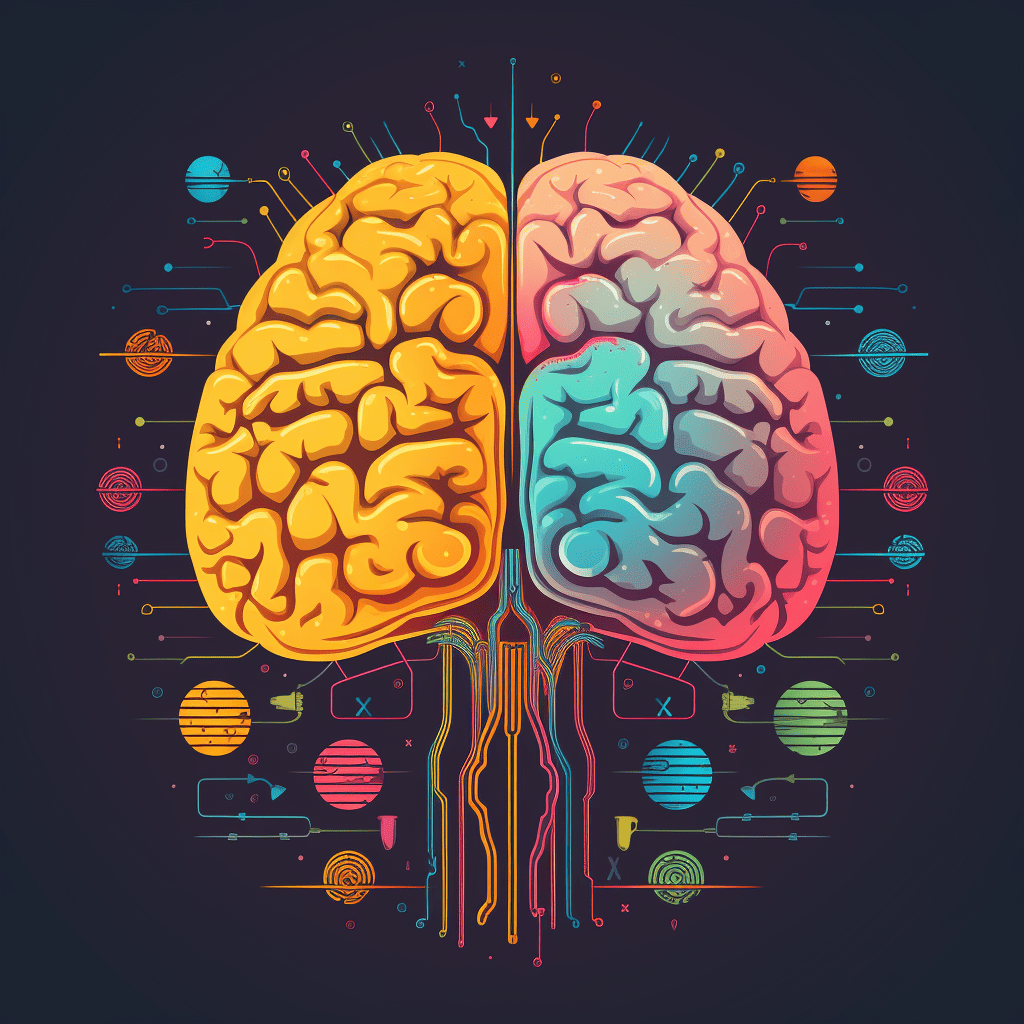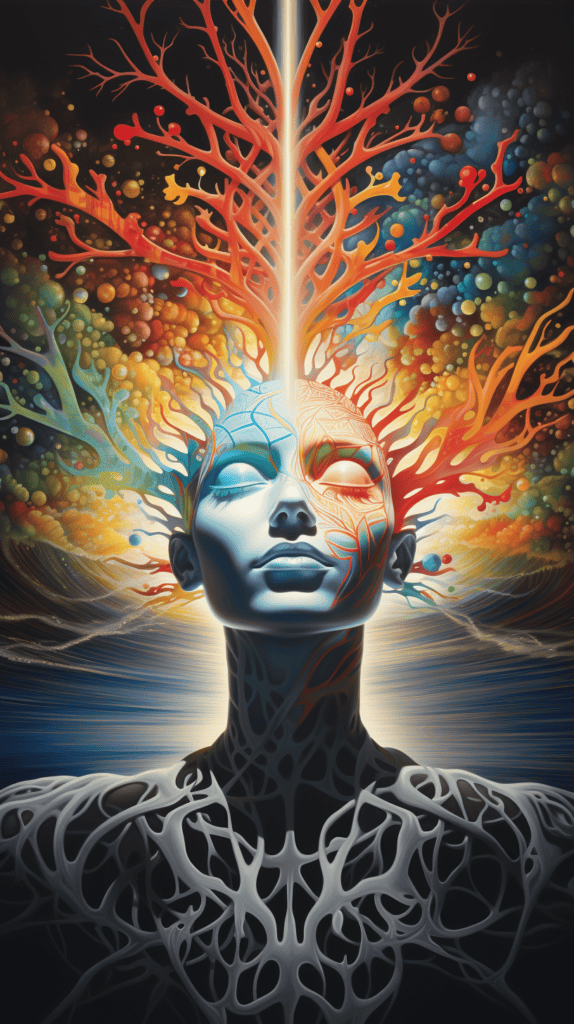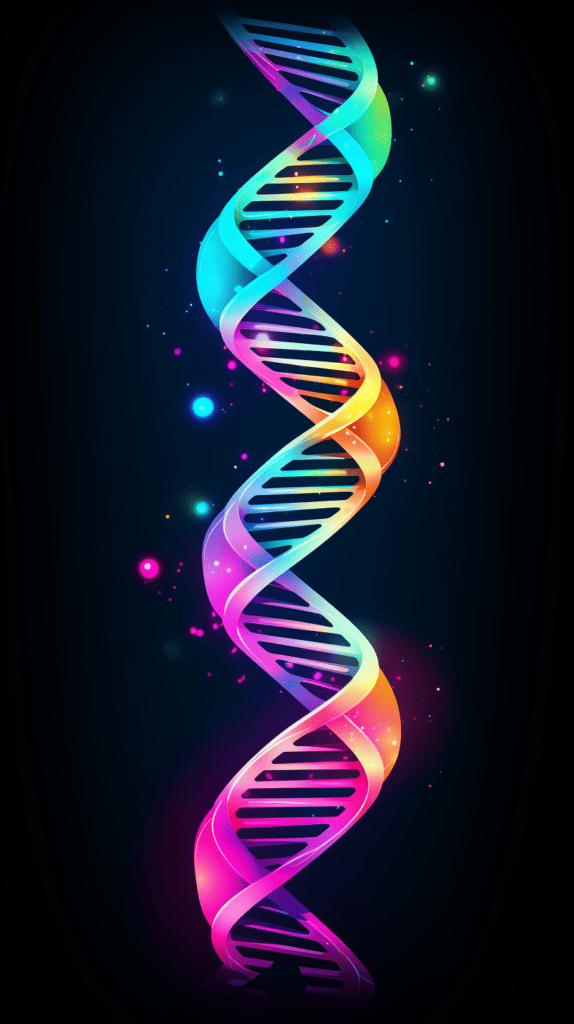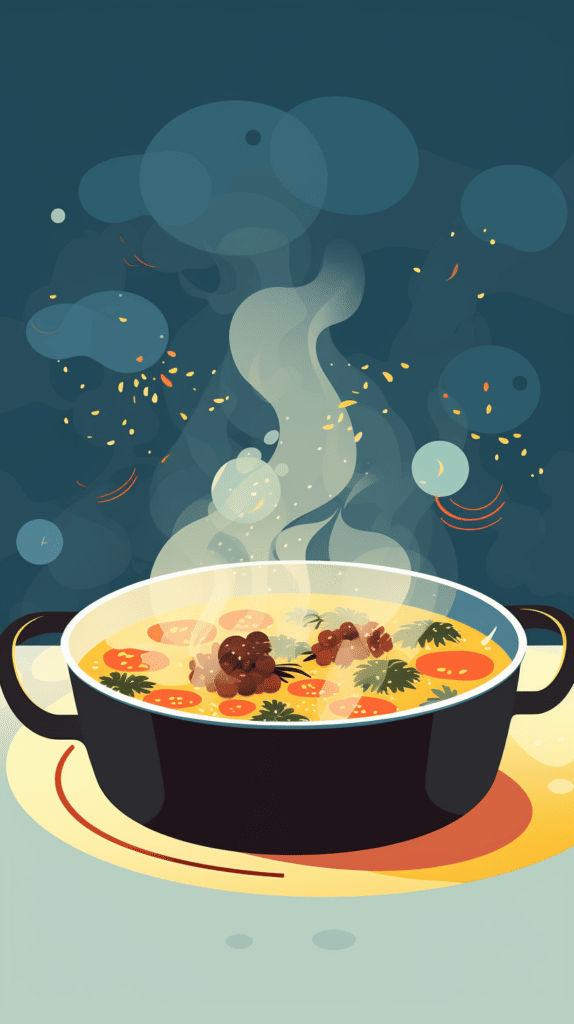Have you ever wondered why you react the way you do to certain situations? Or why some smells transport you to memories from long ago? The answers to these questions lie at the intersection of biology and psychology.
Biopsychology is the study of how our brain's biology influences our thoughts, emotions, and behaviors. It seeks to understand the relationship between the neural circuits, chemicals in our brain, and the experiences we face every day.
In this journey, we will delve deep into the wonders of the brain, from how emotions are formed to the role of hormones in our behavior. You'll have an appreciation for the organ inside your skull and a deeper understanding of yourself.
What is Biopsychology?

Imagine being handed a bunch of puzzle pieces but no guiding image. Each piece represents a snippet of your feelings, behaviors, and reactions. You try to fit them together, hoping to see the full picture, but it's challenging.
Biopsychology, in many ways, provides that guiding image. It offers a clearer image of how your brain's biology works with your psychological experiences.
Every emotion you've ever felt, every choice you've made, every song that’s stuck in your head are all born from the collaboration between parts of your brain.
Psychology seeks to understand behavior and mind. Biology focuses on the physical and chemical processes in our bodies. Biopsychology combines biology and psychology to help us better understand ourselves.
So, why should you care? Well, understanding biopsychology can offer insights into everyday questions.
Ever wondered why certain foods comfort you? Or why a particular song can make you cry? Behind those simple moments are complex interactions of neurotransmitters, hormones, and neural networks.
By understanding the reasons behind our behaviors, we can make better decisions, have stronger relationships, and boost our well-being.
But it’s not only about individual understanding. On a broader scale, biopsychology has tremendous implications in the medical world.
Biopsychology has helped us create treatments for mental health disorders. It has also paved the way for breakthroughs in neurology.
Remember, our brains aren't just spongy organs resting in our skulls. They're the centers of our experiences, the drivers of our behaviors, and the essence of who we are.
Structure and Functions of the Brain
Imagine your brain as a supercomputer. Just like a computer has hardware and software that work together to run programs, your brain has structures and functions that work together to shape your thoughts, emotions, and behaviors.
And while we often think of the brain as one big organ, it's actually made up of many different parts, each with its own unique job.
The largest part of your brain is the cerebrum. It’s like the CEO of a company, overseeing and controlling most of what you think and do. This part handles thinking, learning, problem-solving, and sensing.
The cerebrum has a left and right half, often called hemispheres. The two sides might look alike, but they often have different roles.
The left side of the brain handles language. The right side recognizes faces and spatial relationships.
Below the cerebrum lies the cerebellum, which you can think of as the conductor of an orchestra. It doesn’t make the music, but it ensures all parts play in harmony.
In your body, the cerebellum helps with coordination and balance. It’s the reason you can walk without tumbling over or reach out to grab something without missing.
Deeper inside, you'll find the brainstem. The brainstem controls many of the automatic functions, like breathing and heartbeat.
But it's not only about structure; it's about communication too. All these parts of the brain talk to each other using something called neural pathways.
Think of these like roads in a city that connect different neighborhoods or brain areas. The more you use a pathway, the stronger it becomes.
That's why practicing a new skill starts off feeling hard but becomes easier over time.
Every person’s brain is unique. It’s shaped by genetics, experiences, and even the choices you make. So while we all have the same basic parts, how they work together makes you distinctively you. And that’s the real magic.
Neurons and Neurotransmitters

Imagine the brain as a bustling city. In this city, messages need to travel fast, from one end to the other, making sure everything runs smoothly.
Instead of delivery trucks and courier services, your brain has neurons and neurotransmitters.
Neurons are like the dedicated postal workers of this city. They are specialized cells designed to send information throughout the brain and the rest of the body.
Picture a tree, with roots, a trunk, and branches. In a neuron, these parts are:
- the dendrites (like roots), which receive messages
- the axon (the trunk), which carries the message
- the axon terminals (the branches), that pass the message on
Every second, these neurons send and receive messages that allow you to think, feel, and act.
Now, you might wonder, how do these messages jump from one neuron to the next?
That's where neurotransmitters come into play. Think of them as the delivered letters or packages.
These are special chemicals that transfer the message across a tiny space called the synapse. Like different letters convey different news or emotions, different neurotransmitters have different effects.
For instance, serotonin is a neurotransmitter often linked to feelings of happiness and well-being. And dopamine is about pleasure and reward.
It's fascinating, isn't it? You see a delicious piece of chocolate cake, and suddenly crave a bite. Behind that simple desire is an intricate dance of neurons firing and neurotransmitters passing messages. All that action leads to the urge to indulge.
But it's not only about cravings. The balance (or imbalance) of these neurotransmitters is important.
Ever felt the rush of happiness after a good workout? That's a balanced release of endorphins, another type of neurotransmitter. Imagine if you always felt that same rush. You wouldn't be able to calm down!
These imbalances can mean there is too much or too little of a neurotransmitter, or too strong or too weak communication between them. Imbalances in neurotransmitters are linked to various disorders, like depression or anxiety.
Brain Waves and Consciousness
Picture this: you’re at the beach, watching the waves crash on the shore. Some waves are large and powerful, while others are small and gentle.
Within the depths of your brain, there are waves too, not of water, but of electrical activity. These are brain waves, and they give insights into your state of consciousness.
When you're wide awake, alert, and focused on a task, like solving a puzzle or reading this article, your brain is buzzing with activity.
During these moments, it produces beta waves. Think of them as the fast, short waves on the beach when the wind picks up. They're a sign of mental engagement.
On the other end of the spectrum, when you're in the deepest phase of sleep, your brain emits delta waves.
These waves are slow and long, resembling the gentle, rolling waves during a calm morning at the beach. This is when your body is resting, healing, and re-energizing for the next day.
There are also states between. Ever been lost in thought, daydreaming, or meditating? During these relaxed, reflective moments, your brain is likely producing alpha waves.
And as you start to drift into sleep or as you’re waking up, you're in the realm of theta waves, a space of light sleep and deep relaxation.
By studying brain waves, scientists can learn a lot about our mental and emotional states. For example, disruptions in brain wave patterns can show certain disorders or conditions.
The Emotional Brain
Have you ever been surprised by a sudden rush of emotion, perhaps from a forgotten song on the radio or the scent of a familiar perfume?
Emotions are a universal part of the human experience, yet their origin and purpose have mystified us for centuries.
Biopsychology tells us that your feelings aren't momentary sensations. They are actually physical processes rooted in the brain.
At the heart of our emotional world lies a group of structures called the limbic system. Picture it as the emotional command center of your brain.
One key player here is the amygdala, a tiny almond-shaped structure. Think of the amygdala as the emotional security guard. It’s quick to judge if something is a threat or a reward, causing you to feel fear, joy, or other emotions.
Then there's the hippocampus, another vital member of the team. Its role is like a librarian who archives your emotional memories.
Ever felt nostalgic about a childhood spot or a person from the past? Thank the hippocampus for storing those emotional memories.
The hypothalamus, another part of the limbic system, plays a big role in guiding our actions. It's like the control room, sending signals to the rest of the body. It gets you ready to take action, whether that’s hugging a loved one or running from danger.
Of course, emotions aren't solely the result of these brain structures. They're also tied to hormones and neurotransmitters.
For instance, when you're feeling that excited sensation of being in love, there's a good chance the hormone oxytocin is at play.
Hormones and Behavior
You've probably heard the phrase, "It's just my hormones acting up!"
Hormones often play an underrated role in influencing our behaviors and emotions. They show up as mood swings during puberty, cravings during a period, or even the 'butterflies in your stomach' feeling during a first date.
Hormones are chemical messengers produced by glands in the endocrine system. They travel through our bloodstream to deliver important messages to different parts of the body.
Take cortisol, for example. This hormone is like the alarm bell that alerts the body when there's a stressful situation. It prepares you for the 'fight or flight' response.
Cortisol floods your body when you're nervous about giving a presentation or an upcoming event. This lets you be alert and face the challenge, but it also creates the signs of anxiety.
Then there’s testosterone, often linked with aggressive behavior. While it's primarily known as a male hormone, both genders produce it, but in different amounts.
Higher levels of testosterone can make someone more competitive or take more risks. Think about the adrenaline rush you get during an intense game or competition. That surge of daring? Testosterone plays a role.
On the softer side, we have estrogen, associated with nurturing and bonding behaviors. This hormone relates to maternal instincts and the emotional shifts during a menstrual cycle.
But it’s essential to remember: hormones don't work in isolation. They’re part of a complex interplay with our environment, experiences, and genetics. While they guide and influence, they don't dictate.
For instance, not everyone with high testosterone will be aggressive. And not all maternal feelings can be pinned solely on estrogen.
Knowing this can help us recognize when our invisible puppeteers are at work and choose how to respond. After all, while hormones might set the stage and offer a script, we still have the power to decide how to play our roles.
Genetics and Behavior

When you look in the mirror, do you ever wonder why you have your grandmother's nose or your father's eye color? It's because of those tiny instructions passed from generation to generation called genes.
But what if I told you that these genes don't only influence your appearance? They also influence your behaviors, personality, and even certain emotions.
Genes are the original set of instructions for building and operating the human body. They are kind of like the first draft of a detailed novel.
Everyone's book has a different story, thanks to the combination of genes inherited from our parents.
Now, one of the most discussed concepts in biopsychology is the nature vs. nurture debate.
Does our behavior come from our genetics (nature), or our environment and experiences (nurture)?
The question started with ancient philosophers. Plato, for instance, believed that certain ideas and characteristics were present at birth. Aristotle leaned more towards the idea that our mind is a blank slate, or tabula rasa, and that we're influenced by our experiences.
As the understanding of genetics increased in the 20th century, the debate intensified. Researchers began to realize that human development isn't as black and white as picking a side in this debate. Instead, it's an interplay of both genetic factors and environmental influences.
For example, while certain traits like eye color are almost entirely determined by genes, other attributes like personality or intelligence are influenced by a mix of both genetic and environmental factors.
Ever heard of monozygotic twins? They are identical twins with nearly the same genetic code. Research shows that even when these twins are raised apart, they often share similar personalities and interests.
But it's not all written in stone. Take the gene associated with the neurotransmitter serotonin, often linked to mood.
Certain amounts of serotonin can increase the risk of depression. But having that amount doesn't mean the person will be depressed. Environmental factors, like supportive relationships or coping strategies, can help balance genetic predispositions.
Simply put, both genes and environment influence who a person becomes. A child might inherit a love for music from a parent, but without exposure or encouragement, that built-in passion might never blossom.
Learning and Memory
Think back to your first bicycle ride. At first, you were probably afraid, but the fear turned to excitement when you found your balance. Fast forward, and riding a bike now feels like second nature. This transformation from uncertainty to mastery is due to the brain's ability to learn and remember.
Learning is the process by which we get new knowledge or skills. Your brain learns by forging and strengthening connections between neurons. These connections, called synapses, are like highways that ease the flow of information.
Now, onto memory. Memory ensures that what's learned isn't forgotten. It allows you to tap into past experiences and knowledge.
This storage system isn't one-size-fits-all; there are different types of memories stored in distinct parts of the brain.
Ever touched a hot pot and immediately pulled away? That's procedural memory at play, responsible for skills and habits. It lives in the basal ganglia and the cerebellum, ensuring you don't have to relearn everything from scratch each day.
Then there's declarative memory, which holds facts and events. Remembering your best friend's birthday or the capital of France? That's the work of the hippocampus and surrounding structures that catalogue this information for you.
But, memory isn't infallible. Ever walked into a room and forgot why? Or struggled to recall a word on the tip of your tongue? Memory glitches are natural. They are influenced by various factors like stress, lack of sleep, or even age.
You can't have learning without memory. Memory is essential to every task we do. But sometimes, we don't need to remember how to do something to do it. Like, we don't need to remember how to ride a bike, we just do it.
Senses and Perception

Close your eyes for a moment. Now, listen to the soft hums around you, feel the texture of the device in your hand, or breathe in and notice what you can smell.
These sensations are the basis of your experience. Without them, your connection to the world would be incredibly different. Your senses gather data from the environment. And your perception translates that data into meaningful stories.
Let's start with vision, our dominant sense. It begins in the eyes, where the retina's photoreceptor cells detect light. But seeing isn't only about recognizing brightness and color. It's also about understanding depth, movement, and shapes.
Ever wondered why a flat movie screen can depict such a vivid 3D world? It’s because your brain is a master at interpreting visual cues, turning simple light patterns into complex narratives.
Then there’s hearing, where waves of air pressure, or what we refer to as sound waves, vibrate the eardrum. These vibrations travel to the inner ear, getting translated into electrical signals.
Whether it's the soft strumming of a guitar or the chaos of a busy street, your ears and brain work together to make sense of these auditory patterns.
Next, consider touch. The skin, the body's largest organ, is peppered with receptors sensitive to pressure, temperature, and even pain.
Ever felt the prickly sensation of a foot that's 'fallen asleep'? That's your body’s network of touch sensors sending confused signals because of restricted blood flow.
Smell and taste, or olfaction and gustation, are the more intimate senses. They work closely, influencing each other. That's why food tastes bland when you have a stuffy nose.
The olfactory sense detects chemicals in the air that allow you to enjoy a fragrant flower. The gustatory sense detects chemicals in our food so we can enjoy a savory meal.
Yet, perception isn't merely a passive process. Past experiences, beliefs, and even mood can shape how you interpret sensory data.
That's why a song can sound sad to one person but uplifting to another, or why the same dish can evoke different memories for different people.
Stress and the Brain
Imagine being aboard a ship navigating turbulent waters. Waves crash, thunder roars, and the vessel sways, testing its resilience.
Similarly, life often sends challenges our way, and the brain, like that ship, tries to steer us through. This response to life's pressures and threats is what we call stress.
At its core, stress is a survival mechanism. Remember the last time you narrowly avoided an accident? Perhaps you braked just in time to prevent a collision, or swiftly sidestepped a falling object.
That heightened awareness and pulse is your brain's fight-or-flight response in action. The response is thanks to the amygdala, which sounds the alarm, and the hypothalamus, which kick-starts the reaction.
In the short term, stress can be beneficial. It sharpens focus, boosts energy, and prepares you for immediate action.
But prolonged exposure to stress? That's where problems begin. Chronic stress is like a ship stuck in stormy waters, straining its structure and causing wear and tear.
Chronic stress affects the brain in many ways. It can shrink the prefrontal cortex, which handles self-control, decision-making, and emotions. It enlarges the amygdala, increasing the risk of anxiety and emotional disorders.
Additionally, too much of the stress hormone cortisol can impair memory and concentration.
Beyond the brain, stress causes problems in the body. It can impact sleep patterns, weaken the immune system, and increase blood pressure. One system gets affected, and then another, and another, creating a chain reaction of health issues.
But here's the silver lining: just as the brain is vulnerable to stress, it's also resilient. You can counteract the effects of stress with mindfulness meditation, deep breathing exercises, and physical activity.
The Future of Biopsychology
Now you can see how vast and intricate the interplay between the brain and behavior is. But as with any scientific attempt, the more answers we uncover, the more questions arise.
So, what's next? What awaits on the horizon of biopsychological exploration?
Imagine a world where we can see the exact genetic markers linked to specific behaviors or psychological disorders. With advancements in genomic mapping and gene-editing technologies like CRISPR, this might soon be a reality.
Personalized treatments based on an individual's genes could revolutionize mental health care. Right now, we have a one-size-fits-all approach, but it doesn't actually work for everyone.
Then there's the promise of neuroimaging. As these techniques get better, we'll get better at understanding the brain.
Imagine being able to watch neural connections form during the learning process. Or observe the real-time impact of stress on brain structures. This could positively change how we approach education, therapy, and even professional training.
Brain-computer interfaces (BCIs) present another exciting opportunity. These tools ease direct communication between the brain and external devices. BCIs could help people with motor disabilities learn how to walk again. They could even teach people how to think critically.
Yet, with such progress comes important questions. If we can change genes linked to undesirable traits, where do we draw the line? What is "normal" or "acceptable" behavior?
We also have to ask questions about privacy, autonomy, and human identity.
The field of biopsychology has many innovations to offer. But it also requires responsibility for care and compassion. By staying informed and engaged, you, as part of society, can influence the direction this ship sails.
Conclusion
Stepping into the world of biopsychology is like opening a door to a vast, fascinating universe. It's where the magic of the mind meets the logic of biology.
From understanding how we think, feel, and act, to unraveling the mysteries of memory, emotions, and behavior, this field offers answers to some of life's biggest questions.
But as with any journey, the deeper we go, the more we realize there's so much more to explore. The future of biopsychology is full of possibilities. With every discovery, we get one step closer to understanding ourselves better.
Remember, this isn't just science for the experts. It's about you, me, and everyone around us. By learning about our brains and how they shape our lives, we can make better choices, be more compassionate, and appreciate the wonder that is human existence.



